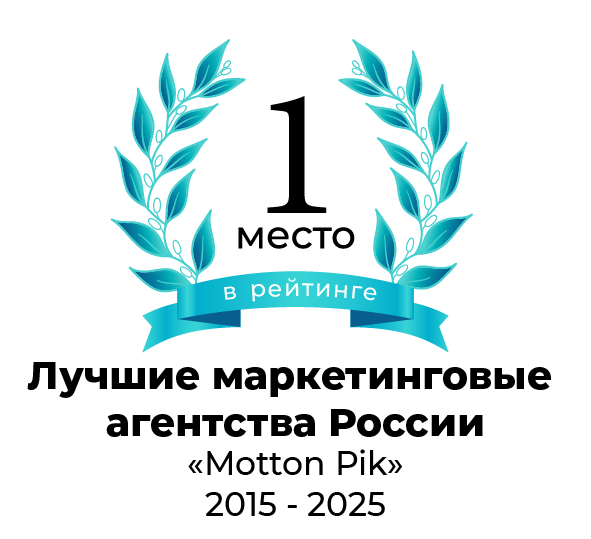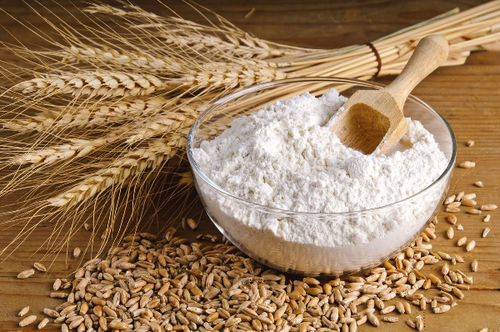RESEARCH METHODOLOGY
Subject of research:
FAST FOOD MARKET
Goal of research:
EVALUATION OF THE MARKET AND FORECAST OF ITS DEVELOPMENT FOR 2014-2016
Regions of research:
RUSSIA AND LARGEST CITIES, REGIONS OF RF
Main blocks of research:
GENERAL ECONOMIC SITUATION IN RUSSIA
RUSSIAN PUBLIC CATERING MARKET
RUSSIAN FAST FOOD MARKET VOLUME
LARGEST PLAYERS ON FAST FOOD MARKET
TRENDS ON FAST FOOD MARKET
STATE REGULATIONS OF THE MARKET
CONSUMER PREFERENCES
FORECAST OF FAST FOOD MARKET
Production volumes, financial activities data, balance sheets, profit and loss statements, cash-flow statements, the subsidiaries and other data about these main companies were presented.
Information sources used:
Federal State Statistics Service
The Ministry of Economic Development
The Federal Customs Service
Industry experts’ estimates
Reports on retail sales
Data of the main players of the branch
Printed and electronic publications of the branch
The research contains 16 schedules, 9 diagrams, 10 tables and 1 picture.
EXTRACTS FROM RESEARCH
CHAPTER 3. VOLUME OF THE RUSSIAN FAST FOOD MARKET
As for 2013 public catering market turnover reached ** billion rubles and per capita parameter amounted to ** rub/person. In the closets time a slight slowing down of the growth is expected due to new wave of crisis in Russia. As practice shows in these periods people tend to decrease expenses for entertainment and eating out.
Russian public catering market is characterized by seasonality: the minimum turnover is observed in the first quarter of the year (January), the largest – in the last quarter. In 2009 a considerable decrease in the growth rates was observed in 2009 with the seasonality preserved, but revenues of Russian catering facilities were by 7,5% lower in the second half of the year than in the previous year. In 2010 the parameters were apt to grow.
In the last quarter proceeds of public catering facilities were higher. It was due to high demand for corporate events in café and restaurants. Besides, the growth was also due to pricing on the market of restaurant services during this period, prices in the menu increase by 5-10%.
CHAPTER 4. RUSSIAN PUBLIC CATERING MARKET VOLUME
During 2008-2012 fast food market increased dynamically and even in the crisis 2009, when the largest part of enterprises were short of the clients flow, fast food continued to grow with relatively high rates: public catering market in general decreased by 1,6%, and fast food segment increased by **,4%.
In 2013 rate of the market growth slowed down to **%. It was due to saturation of large cities markets, on the one hand, and Russian economy slowing down on the other hand. Studies showed that during the pre-crisis period people decrease eating out expenses. In particular, public catering market will not be so affected (judging by 2009) but the growth will slow down.
In 2013 market turnover increased by **%, and reached ** billion rubles. It amounted to **,1% of public catering market in general. Compared to 2007 this parameter was equal to **,4%.
The main trend of the market is regional expansion. Fast food networks strengthened their positions in two capitals and began to develop in regions of Siberia, Ural and Southern Regions. In the closest future their growth will be moderate and systematic.
CHAPTER 5. LARGEST PLAYERS OF FAST FOOD MARKET
“Teremok” is a Russian fast food network, presented nowadays in Moscow and St. Petersburg. Сейчас Now “Teremok” is represented by 3 formats: street stands, fixed-site restaurants and food courts in the shopping centers. In the street stands only pancakes are sold, and in fixed-site restaurants cereals and soups added into the range of products.
As of April, 2014 "Teremok" network in Moscow and Moscow Region was represented by ** cafes where the share of street stands made only **objects or 14,7% (all of them are located in the capital). In St. Petersburg **cafes functioned, and about a half of them worked in street stands format.
In 2013 their turnover was estimated by the owner of the company - Mikhail Goncharov at ** billion rubles in Moscow and ** billion rubles in St. Petersburg. Two more sale points were opened on franchise as an experiment: in Tyumen and Surgut. At the end of 2013 "Teremok" opened in Krasnodar. The choice of the city is determined by the fact that Krasnodar is the leader of all business ratings, and also a large number of shopping centers.
RESEARCH METHODOLOGY
LIST OF SCHEDULES, DIAGRAMS, TABLES AND SCHEMES
1. SUBJECT OF RESEARCH
1.1. Street outlets (Street food)
1.2. Fast food
1.3. Casual Dining
1.4. Fine Dining
1.5. Food Court
2.GENERAL ECONOMIC SITUATION IN RUSSIA
2.1. Population of Russia
Number of population
Social standards of living dynamics
Largest cities
2.2. Moscow and Moscow Region
2.3. Saint Petersburg
3. RUSSIAN MARKET OF PUBLIC CATERING
3.1. Volume of Russian public catering market
Dynamics by years
Dynamics by quarters
Market volume in regions
3.2. Public catering objects in regions
3.3. Regional specific features
4. VOLUME OF THE RUSSIAN PUBLIC CATERING MARKET
4.1. Market dynamics by years
4.2. Regional market structure
4.3. Largest fast food networks in million-strong cities
5. LARGEST PLAYERS ON PUBLIC CATERING MARKET
5.1. Rating opf companies by number of outlets
5.2. Opening plans
5.3. Foreign companies
McDonald’s
KFC
Subway
Burger King
Sbarro
Starbucks
5.4. Russian companies
Stardog!s
Chaynaya lozhka
Kroshka-Kartoshka
Teremok
Podorozhnik
Traveler’s Coffee
5.5. Healthy nutrition fast food
Prime-star
Healthy food
6. TRENDS ON PUBLIC CATERING MARKET
6.1. Focus on regional development
6.2. Russian filling of foreign fast-food
6.3. Networking fast food prevailing
6.4. Bunkruptcy of fast food market players
6.5. Franchising scheme on public catering market
Factors limiting franchising development
6.6. Novelties on public catering market
Soup fast food
Arctic fast food
7. STATE REGULATIONS OF THE MARKET
7.1. Regulations
7.2. Strategy of trade development in RF for 2011-2015 and until 2020
8. CONSUMER PREFERENCES
8.1. Eating out expenses
8.2. Structure of public catering facilities visits
Moscow residents preferences
Consumer image of McDonald’s
Preferences by location of public catering networks in cities
9. FORECAST OF THE RUSSIAN FAST FOOD MARKET
ABOUT INTESCO RESEARCH GROUP
List of schedules
Schedule 1. Dynamics of population of Russia in three forecast variants in 2011-2031, ths people
Schedule 2. Dynamics of actual household disposable income of population and annual rate of growth in 2000-2012, %
Schedule 3. Dynamics of constant population of Moscow for the 1st of January in 2001-2012, mln. peop.
Schedule 4. Dynamics of actual disposable money income in Moscow by years in 2003-2013* ths rubles
Schedule 5. Per capita money incomes of population of Moscow in 2009-2013, ths rubles
Schedule 6. Share of eating out expenses of residents of Moscow for in 2000-2013*, %
Schedule 7. Dynamics of constant population of Saint Petersburg in 2001-2014* (actual as for 01.01.2014), mln people
Schedule 8. Dynamics of constant population of Leningrad region in 2000-2014* (actual as for 01.01.2014), mln people
Schedule 9. Dynamics of average monthly wage of the resident of Saint Petersburg by years in 2002-2013, ths rubles
Schedule 10. Per capita money incomes of the population of Saint Petersburg in 2007-2012, ths rubles
Schedule 11. Share of expenditures for public catering services in total volume of expenditures for services in 2004-2012*, %
Schedule 12. Dynamics of the Russian public catering market turnover and per capita in RF in 2003-2013
Schedule 13. Dynamics of the Russian public catering market volume by quarters in 2007-2013, billion rubles
Schedule 14. Russian fast food market turnover in 2007-2013, billion rubles
Schedule 15. Average expenditures in public catering facilities in different regions of the world in 2007, 2012 and forecast for 2017, dollar/person
Schedule 16. Russian catering market turnover in 2010-2013 and forecast for 2014-2016, billion rubles
List of diagrams
Diagram 1. Dynamics of constant population of Moscow Region as for January 1 in 2000-2013, mln people
Diagram 2. Structure of Saint Petersburg population distribution by regions in 2013, %
Diagram 3. Change of regional structure of public catering market turnover in 2008-2012, %
Diagram 4. Structure of fast food market by size of cities in cost terms in 2013, %
Diagram 5. Structure of facilities distribution of «Teremok» network by formats of enterprises in Moscow and Saint Petersburg in 2013-2014, %
Diagram 6. Share of Moscow and Saint Petersburg in public catering market structure in 2008-2012, %
Diagram 7. Russian residents stance on eating out, as on costly affair, in 2012, %
Diagram 8. Structure of feeding arrangement of working Russian population during the working day, %
Diagram 9. Structure of McDonald’s target audience, %
List of tables
Table 1. Number of population in largest cities of Russia according to Census of 2002 and 2010 and as for January1, 2013, ths people
Table 2. Average monthly salary in Moscow in general and in cafes, restaurants by years in 2002-2013, rub
Table 3. Per capita money incomes of the population of Moscow by months in 2009-2013, rubles
Table 4. Average monthly salary in St. Petersburg in general and in cafes, restaurants by years in 2002-2013, rubles
Table 5. Volumes of public catering market turnover in regions of RF in 2008-2012, million rubles
Table 6. Number of public catering facilities in 2011-2012, units
Table 7. Largest fast food networks in million-strong cities
Table 8. Largest fast food networks in Russia by number of outlets in 2012-2014, units
Table 9. Financials of «Cofe Sirena» LLC, ths rubles
Table 10. Largest networks on fast food market by number of franchising outlets as for March 2014, units
List of pictures
Picture1. Geography of burgers components of KFC, Burger King and McDonald’s production in 2014













